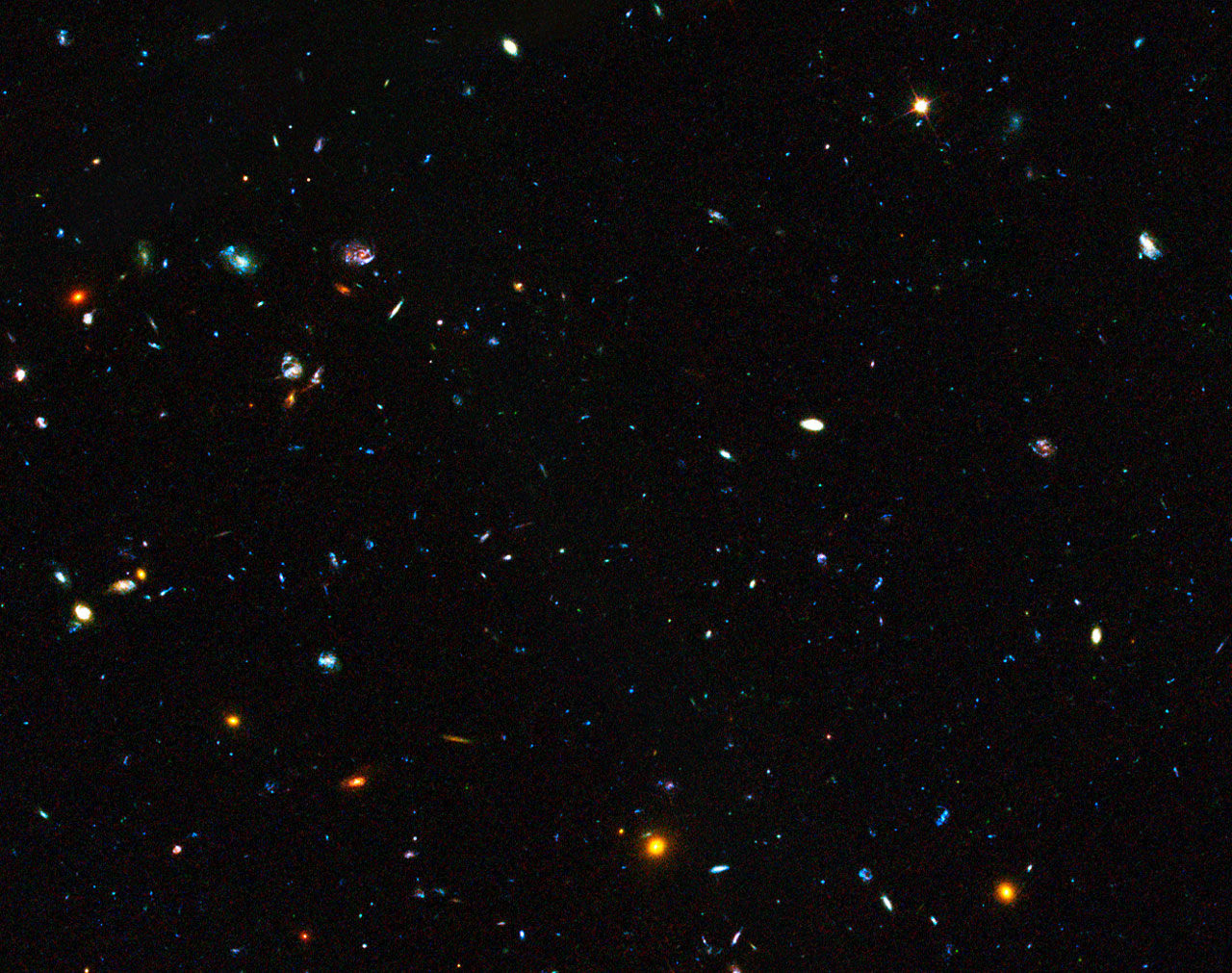Ancient Dwarf 'Starburst Galaxies' Shed Light on Early Universe

Brilliant bursts of star formation in distant dwarf galaxies seen by NASA's Hubble Space Telescope could reveal new information about the early history of the universe, scientists say.
Galaxies churn out new stars all the time, but most of the universe's stars formed between two and six billion years after the Big Bang (which occurred 13.8 billion years ago). The new Hubble observations capture the prolific dwarf galaxies, which are known as "starburst galaxies," during this dramatic epoch, researchers said. You can watch a video explaining the new dwarf galaxy observations .
"We already suspected that dwarf starbursting galaxies would contribute to the early wave of star formation, but this is the first time we've been able to measure the effect they actually had,"study lead author Hakim Atek, of the École Polytechnique Federale de Lausanne in Switzerland, said in a statement.
"They appear to have had a surprisingly significant role to play during the epoch where the universe formed most of its stars," Atek added.
The distant dwarf galaxiesthat the Hubble telescope observed are forming stars so quickly that they can double the number of stars they hold in just 150 million years. Normal galaxies take 1 to 3 billion years to do this, researchers said.
Starburst galaxies are relatively rare; researchers think these galaxies generally require a powerful event, such as a supernova explosion or galaxy merger, to get kicked into star-forming gear.
Hubble observed the dwarf galaxies using its Wide Field Camera 3 (WFC3) instrument, which captures images in a wide range of wavelengths. In the new study, infrared light proved key to illuminating the faraway starburst galaxies.
Get the Space.com Newsletter
Breaking space news, the latest updates on rocket launches, skywatching events and more!
WFC3 also has a prism, which splits light into its constituent wavelengths. The spectroscopy mode of the camera produced the images, in which each galaxy appears as a rainbow streak. Scientists analyze the galaxies' spectra to estimate how far away they are from Earth and determine their chemical composition.
Previous studies of starburst galaxies had focused on nearby or large galaxies, leaving out the faraway, ancient dwarfs, which are more difficult to observe, researchers said.
The iconic Hubble Space Telescope has been snapping pictures of the universe since 1990 and is part of NASA's "Great Observatories" project.

Follow Kelly Dickerson on Twitter. Follow us @Spacedotcom, Facebook or Google+. Originally published on Space.com.
Join our Space Forums to keep talking space on the latest missions, night sky and more! And if you have a news tip, correction or comment, let us know at: community@space.com.

Kelly Dickerson is a staff writer for Live Science and Space.com. She regularly writes about physics, astronomy and environmental issues, as well as general science topics. Kelly is working on a Master of Arts degree at the City University of New York Graduate School of Journalism, and has a Bachelor of Science degree and Bachelor of Arts degree from Berry College. Kelly was a competitive swimmer for 13 years, and dabbles in skimboarding and long-distance running.









